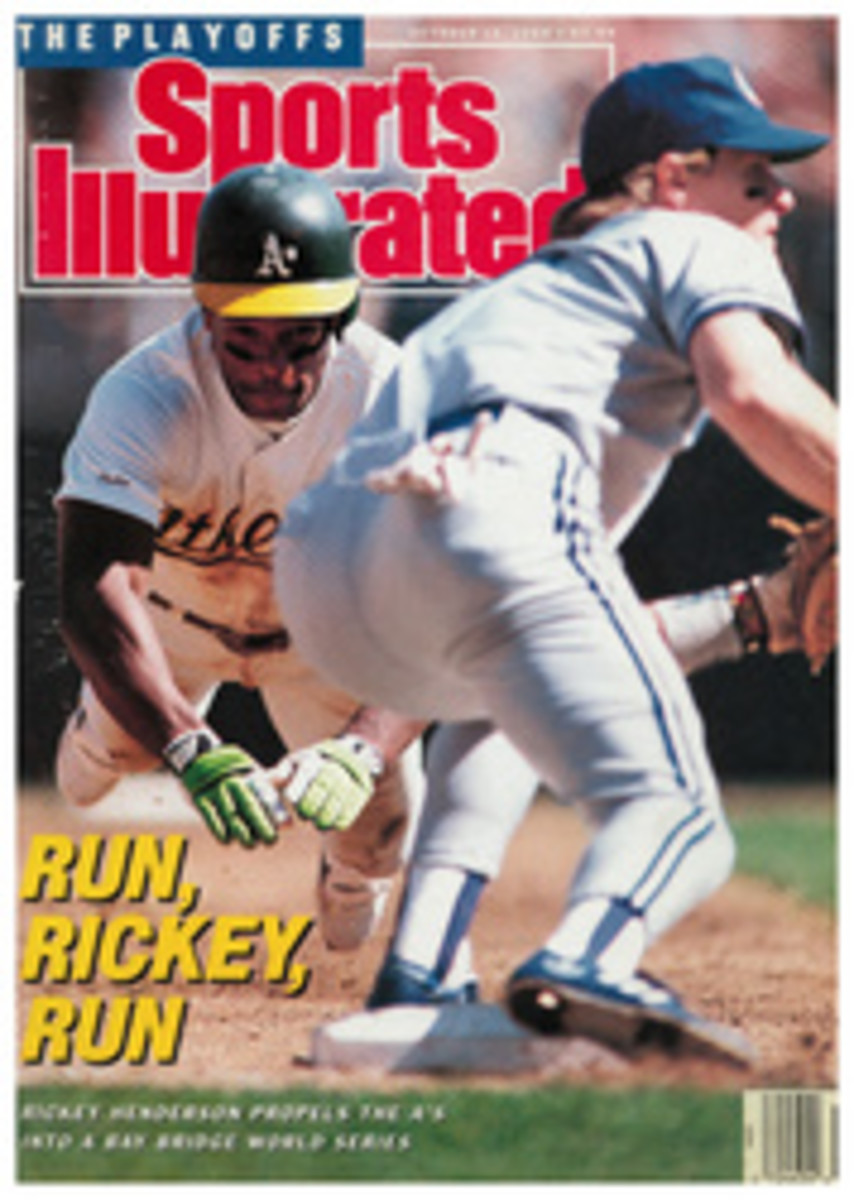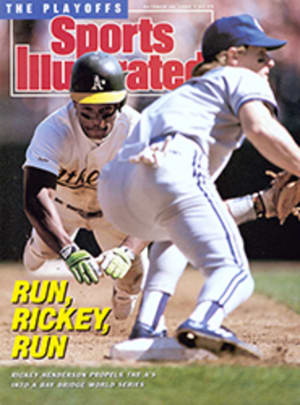
Letters
PANNING PATERNO
Is the Joe Paterno who is being criticized for either not recruiting superior athletes for Penn State or not deploying them properly (A Very Sorry State, Sept. 18) the same Joe Paterno who was SI's 1986 Sportsman of the Year? Is this the same Paterno who was praised for having both a high winning percentage and a high graduation rate?
Who can criticize a coach who helps raise millions of dollars for his university and its library, brings immeasurable prestige to his school and wins two national championships in a decade (with a style that "failed to change with the times")? Maybe SI. Maybe some disgruntled fair-weather fans. But not those of us who understand the significance of Penn State football and its coach. The day Penn State becomes "A Very Sorry State" will be the day Paterno retires.
HARRY WILSON (Penn State '78)
Roanoke, Va.
It's about time Paterno got what he deserves: a good, swift verbal kick in the pants. Despite winning two national championships in the 1980s, Paterno has never let go of his '60s playbook. This year's criticism and the probability of another yawnathon season won't change a thing either. We'll probably find the old coach at his best, moaning about the media. Maybe he'll get up the courage to throw a reporter out of the locker room—even if he won't throw a pass.
GORDEN BLAIN
Marietta, Pa.
NO NATIONAL TV
Hats off to Rick Reilly for delivering a knuckle sandwich to the people involved with national telecasts of high school football games (POINT AFTER, Sept. 18). These folks don't seem to appreciate the fact that somewhere right now there's a 145-pound quarterback from Nowhere High who is preparing to suffer through four quarters (if he's lucky) of getting creamed by a future first-round NFL draft choice who wants to show the country that he has the potential to make pro quarterbacks shake in their shoes. We should be discouraging, not encouraging, this mentality.
MIKE HRADEL
Free Soil, Mich.
I am fearful that the decision of the National Federation of State High School Associations and SportsChannel to televise high school football games nationally will lead to a cry for national high school rankings and a national high school championship tournament. I do not know who would benefit from such experiences, but I'm convinced it would not be the athletes. If they do not benefit, then one has to ask who would, and at what price?
MARGARET JANSSEN
Principal
Brookfield (Wis.) Central High
Televising high school football on local cable is O.K. I have seen games with student producers, technicians, cameramen—and no commercials—and they are rather amusing. But, please, not on national TV.
LARY ROSZKOWSKI
Northfield, Mass.
I couldn't agree more with Reilly's criticism of the plan to televise high school football games nationally. I have a problem, though, with your listing of a high school player as a future All-Pro in your pro football preview (1995 All-Pro Team, Sept. 11). If that's not pressure, I don't know what is. It's this sort of hypocrisy that is ruining high school and college sports.
ANDREW K. BUCHANAN
Chicago
TENNIS ETIQUETTE (CONT.)
Steve Wulf's POINT AFTER (Sept. 11) defending crowd noise and movement at tennis matches could only have come from someone who has never really played the game. The hush that falls over a tennis stadium, particularly just before an important point, is one of the delightful things about the sport. It brings an intimacy and an intensity that few other sporting moments can match. And the players aren't alone in wanting quiet. The spectators do, too.
People wandering in the stands at a baseball game are so far from the field that they are of no concern to the players. People doing the same at a tennis match are close enough to intrude on the play. Those who know anything about the game stay put.
ERIC LEBOURDAIS
Toronto
FINAL ANALYSES
Come on, Peter Gammons (INSIDE BASEBALL, Sept. 18). The worst knock against an athlete is that he isn't trying, which is what I understood you to be saying about Ruben Sierra and Julio Franco and their allegedly "blasè" second halves.
First, as a Texas Rangers season-ticket holder, I can tell you that Franco busted his tail in the field and at the plate all year. As for Sierra, perhaps you can explain how a player can have 33 doubles and 14 triples going into the final weekend of the season by being blasè on the base paths. You might also reveal that Sierra was tied for third in the league in outfield assists with 13.
BROOKS HARRINGTON
Fort Worth
I don't see how Peter Gammons could suggest giving the American League Manager of the Year award to anyone other than Frank Robinson. Tony La Russa has done a fine job with Oakland, but even when the Athletics were beset with injuries, they had 10 times more talent than Robinson's Orioles do.
When you compare Baltimore's personnel with that of other winning teams (and some nonwinning teams), the Orioles' performance this season almost defies explication. Their success has to be attributed to the exceptional job done by Robinson.
JOSEPH KEY
New York City
GUNS
Although I'm sure you don't want to become yet another forum for the gun-control debate, I must respond to the letter from Jack A. Borah in your Sept. 18 issue. He said that you took a "cheap shot" at handguns by suggesting that the suicide of Sacramento Kings guard Ricky Berry might not have occurred if Berry had not owned a handgun. Borah's reasoning was that "a person distressed enough to contemplate suicide will use any means."
When I was a senior in high school, I was not only distressed enough to contemplate suicide, I attempted it. There was no gun around, therefore, I still am. A gun is fast and final. It gives you no chance to change your mind once you've started. It is easy to use in the heat of the moment. Based on my experience and on stories I have heard at numerous counseling groups, I have to agree with you that this tragedy was, at least in part, brought about by the proximity of a handgun.
NILS MCCONNELL
Lincoln, Neb.
SPORTSMAN (CONT.)
It may be a bit early to submit suggestions for Sportsman of the Year, but if the award goes to anyone other than Angel pitcher Jim Abbott, it will be a travesty.
TOM KUCZYNSKI
Southington, Conn.
Jim Abbott, Dave Dravecky of the Giants (SCORECARD, Aug. 28) and Mark Wellman (below left), the paraplegic climber who, with the help of partner Mike Corbett, scaled Yosemite's El Capitan in July (SCORECARD, Aug. 7) have proved that to limit our dreams is to ignore our potential.
CHARLIE OLIVARES
Fresno, Calif.
Mike Reid gave us a classic example of sportsmanship as he walked off the 18th green following the final round of the PGA Championship at the Kemper Lakes Golf Course. Having lost the title on the last few holes, Reid spied the winner, Payne Stewart, coming toward him from the scorer's tent and gave him a high five. Such a magnanimous response during a difficult moment—coupled with his heartfelt comments about his failure to retain the lead and Stewart's subsequent victory—make Reid the natural choice.
JOHN C. MAYO
West Hartford, Conn.
I'm sure I am not alone in recommending that Bart Giamatti be your selection. He taught this nation more about integrity and values than it really wanted to learn. He showed us that education and sports do not have to be mutually exclusive and that what is right must be done, no matter how painful or unpopular. Most important, he told us that no individual is superior to the game. Giamatti, a great man, deserves to be remembered as one of America's greatest sportsmen.
ZACK BIGNER
New Orleans
INDIAN BLOCK
I enjoyed Paul Zimmerman's article on Bronko Nagurski and Don Hutson (The Bronk and the Gazelle, Sept. 11). From his description of Hutson's block of a big tackle—"the strangest-looking block I had ever seen. He...turned his back, flipped one leg in the air and made contact with his butt and back, a sort of reverse, reverse-body block"—I feel sure that what Zimmerman viewed on film was something called the Indian block.
This photo from our company's first piece of advertising literature, circa 1933, shows an Indian block being demonstrated on one of the company's two-man sleds. Judging from the copy that accompanied the picture, this block must have been very popular at that time.
JON C. BUTLER
President, Rae Crowther Co. Ardmore, Pa.
PHOTO
COURTESY RAE CROWTHER CO.
PHOTO
JAY MATHER/SACRAMENTO BEE/SYGMA
Wellman turned in a peak performance on perilous El Capitan.
Letters to SPORTS ILLUSTRATED should include the name, address and home telephone number of the writer and should be addressed to The Editor, SPORTS ILLUSTRATED, Time & Life Building, Rockefeller Center, New York, N.Y. 10020-1393.

